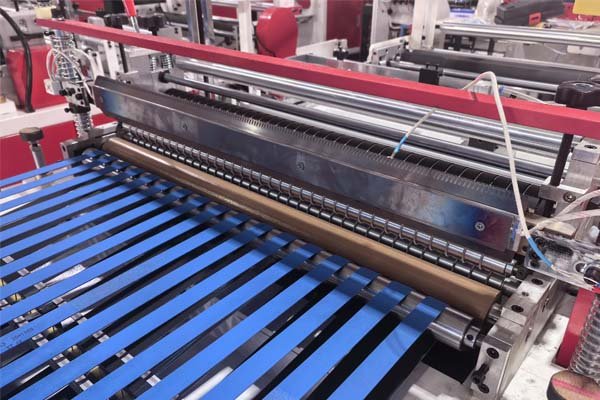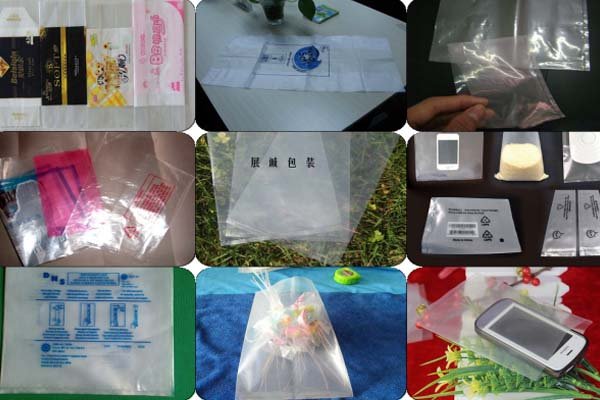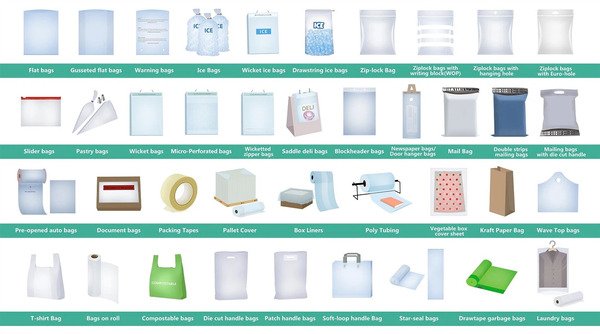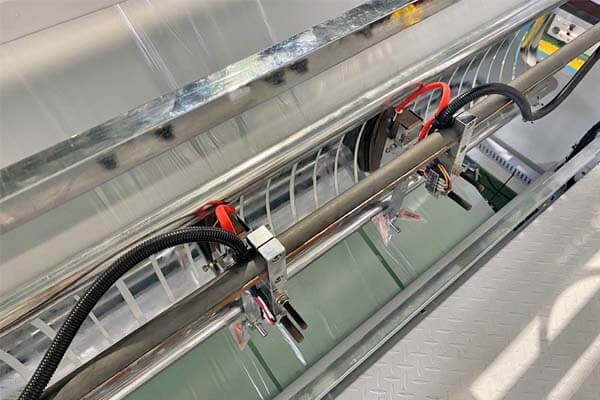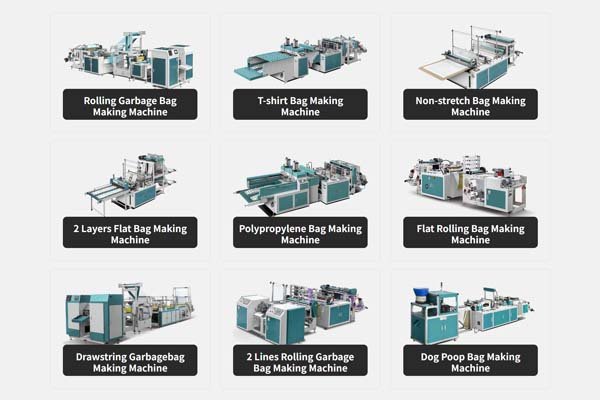
Selecting the right bag on roll machine1 can be challenging. Each machine is built for a specific type of bag and market application. This guide explains the most common types and their ideal uses to help manufacturers make an informed decision.
Choosing the correct machine requires matching it to the design and function of the bag. The main types include flat bag, star seal, T-shirt, saddle, zipper, and medical bag machines—each tailored for a distinct application.
The machine choice significantly impacts production speed, bag quality, and market suitability. For example, a machine designed for simple produce bags won't meet the performance demands of garbage bags. Understanding these distinctions is essential to making a smart investment.
This overview breaks down each machine type by its core function, technical features, and ideal application, covering everything from standard grocery bags to high-spec medical bags.
Flat Bag on Roll Machine – Grocery & Food Packaging
Flat bag machines are ideal for high-volume production of simple, perforated bags used in groceries, produce, and basic food packaging.
These machines create bags with a straight bottom seal and perforation for easy tear-off. They're best for produce bags, bin liners, and light food packaging due to their speed and efficiency.
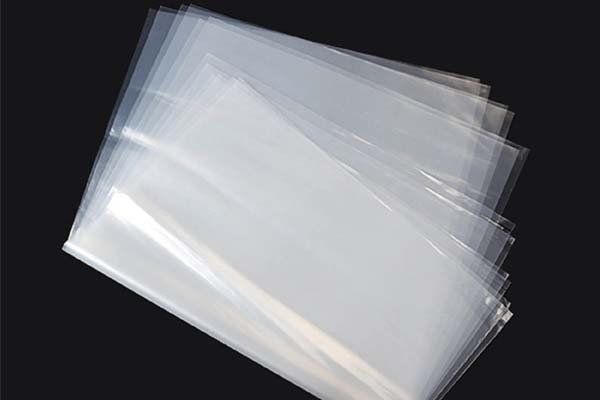
How Flat Bag Machines Work
The machine feeds plastic film through a sealing unit, then perforates it to form a continuous roll of bags. This simple design supports high-speed production, especially for low-complexity products.
Technical Specifications
| Feature | BagMec® Standard | Importance |
|---|---|---|
| Max. Bag Width | 200 mm – 800 mm | Determines usable bag sizes |
| Film Thickness | 0.008 – 0.05 mm | Ensures stability with different materials |
| Production Speed | 100 – 250 pcs/min | Affects output and profitability |
| Sealing Type | Side / Bottom Sealing | Defines bag strength and use |
| Control System | PLC with Touchscreen | Improves control and consistency |
Material Compatibility
BagMec® machines support LDPE, HDPE, and biodegradable films2 like PLA. The patented "Smart Tension Control" maintains consistent tension, reducing waste and enhancing output quality.
Star Seal Bag on Roll Machine – Leak-Proof Trash Bags
Star seal machines are designed for strong, leak-resistant trash and industrial liners.
They fold and seal the film at the base, creating a multi-layered star-like seal that resists corner leaks and distributes weight evenly.
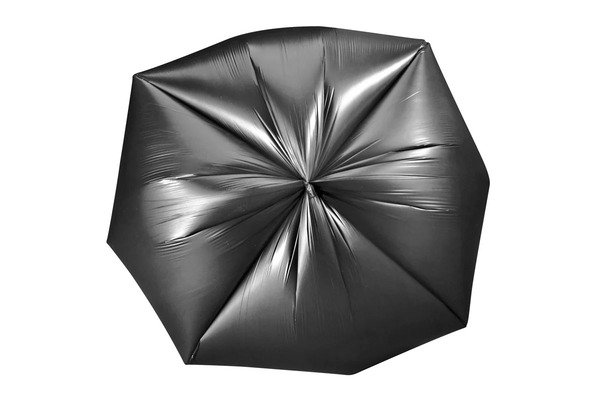
Functionality
Unlike flat seals, star seals eliminate gussets and corners, making the bags more leak-proof and better fitting for bins.
Star Seal vs. Flat Seal Comparison
| Feature | Star Seal | Flat Seal |
|---|---|---|
| Seal Strength | Very High | Standard |
| Leak Resistance | Excellent | Good |
| Best Use | Trash, liners | Produce, packaging |
| Machine Complexity | High | Low |
| Example | Garbage Bag Machine ($5,700–$21,000) | Side Sealing Bag Machine ($4,600–$7,200) |
Custom Options
Machines can include coreless rewinders and inline printing for branding or regulatory compliance.
T-shirt Bag on Roll Machine – Retail & Supermarkets
T-shirt bag machine3s produce easy-to-dispense bags with die-cut handles, ideal for checkout counters.
These machines seal, perforate, and punch T-shirt-style handles, making them perfect for retail and grocery use.

Operation
A punching unit cuts handles after sealing and perforation. BagMec® uses high-carbon steel dies and laser alignment for clean, accurate cuts.
Advantages of Bags on a Roll
- Easy dispensing
- Space-saving
- Less clutter
BagMec®’s machine delivers up to 1,200 bags/hour, suitable for retail packaging operations.
Price Range: $7,200–$17,000
Saddle Bag Machine – Bakery & Deli Packaging
Used for food service environments, these machines produce saddle bags that hang on dispensers.
Saddle bag machines make bags with a small lip and header holes for hanging, ideal for quick one-handed dispensing in bakeries, delis, and butcher shops.
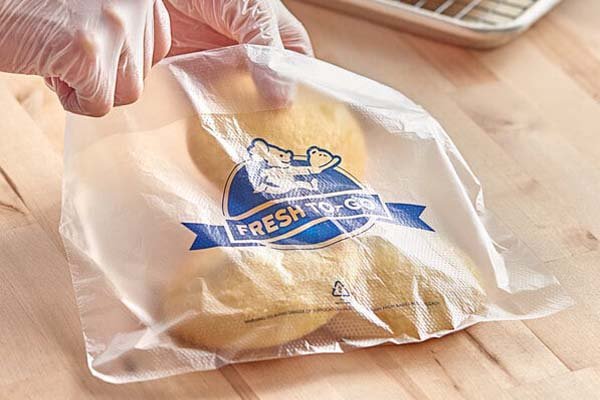
How It Works
The machine creates a saddle pack where bags are grouped on a header for easy dispensing. The lip on the front panel allows fast access.
Hygiene and Safety
- FDA-compliant films4 supported
- Corrosion-resistant coatings
- Easy-to-clean design
Comparison to Flat Bags
| Feature | Saddle Bag | Flat Bag on Roll |
|---|---|---|
| Dispensing | Hangs on saddle stand | Tears from roll |
| Ease of Opening | Very easy | Standard |
| Use Case | Behind-the-counter | Self-service produce |
| Specialization | Food service | General packaging |
Zipper Bag on Roll Machine – Reusable Packaging
Zipper machines apply resealable closures, ideal for storage, e-commerce, and small components.
These machines add a plastic zipper profile to the film before forming the bag, creating reclosable storage or packaging bags.
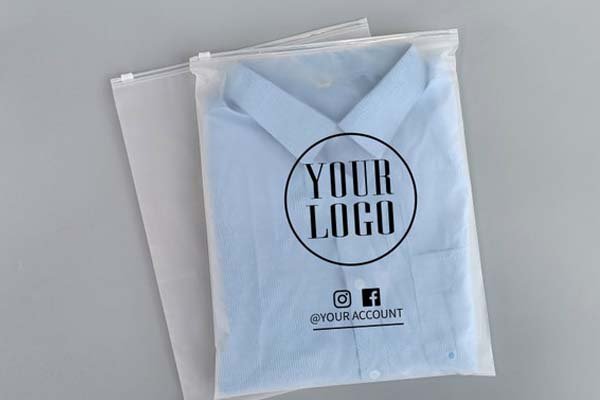
Machine Features
Uses heated or ultrasonic welding to attach the zipper. Proper tension control prevents misalignment or stretching.
Industry Use Cases
- Food packaging (e.g., frozen goods)
- Hardware kits
- Craft and retail items
- Returnable e-commerce packaging
Technical Features
PLC systems control zipper placement, sealing temp, and bag length. Smart Tension Control ensures material integrity.
Price Range: $14,500–$17,000
Medical Bag on Roll Machine – Clinical & Biohazard Use
Medical bags require strict standards for safety and sterilization.
These machines produce sterile or biohazard bags with specific features like tear notches, biohazard printing, and sterilization indicators.
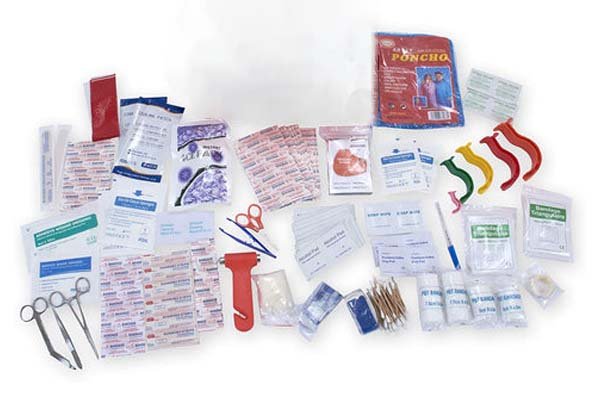
Design Requirements
- Cleanroom-compatible
- Stainless steel contact parts
- Custom designs for clinical settings
Special Capabilities
- Autoclavable materials like PP
- Integrated printing for biohazard labels
- Document pouches for specimen bags
- Sterile tear-open designs
Machines undergo a 72-hour stress test to verify seal integrity and consistent performance.
Pricing: Custom quotes based on requirements.
Multi-lane Bag on Roll Machine – Mass Small Bag Production
Multi-lane systems significantly boost production volume5 by making several bags in parallel.
They slit a wide film into multiple lanes, each producing its own line of bags, maximizing throughput.
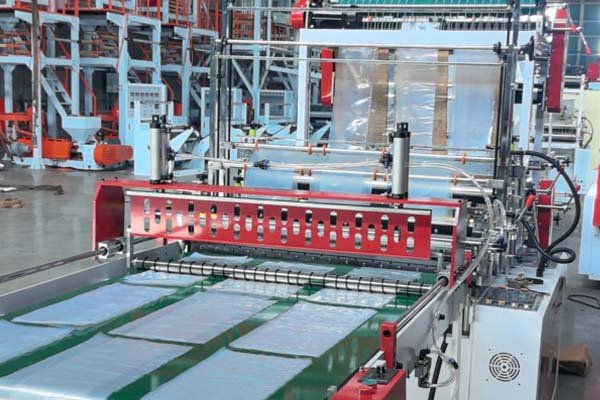
How It Works
A slitting unit divides the film into multiple narrow lanes. Each lane is sealed and perforated individually. Options include 2 to 8 lanes per machine.
Benefits
- High output per machine footprint
- Lower labor cost
- Energy efficiency
- Ideal for large, consistent orders
Best suited for high-volume operations supplying items like supermarket produce bags.
Coreless Automatic Rewinding Machine – Finishing Rolls
These machines finish the production line by creating tight rolls without paper cores.
Coreless rewinders take perforated film and roll it tightly onto itself. They automatically cut and eject the finished roll, readying it for packaging.
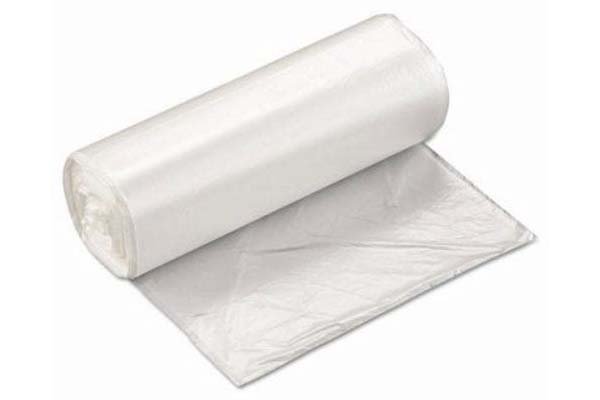
Key Features
- Cost savings from eliminating paper cores
- Reduced waste and environmental impact
- Compact roll sizes for shipping and storage
Automation Includes:
- Bag counting
- Auto film cutting
- Auto roll change (flying splice)
Integrates seamlessly with primary bag-making machines for continuous operation.
Choosing the Right Bag on Roll Machine
Selecting the correct machine starts with a clear understanding of your product requirements.
Match the bag’s purpose, material, and key features with the machine’s capabilities: flat for produce, star seal for trash, T-shirt for retail, and zipper for reusable storage.
Step-by-Step Guide
- Define the Bag Type: Is it a trash bag, produce bag, or food storage bag?
- Identify Key Features: Does it need handles, reclosability, or leak-proof strength?
- Determine Volume Needs: Choose between standard and high-speed/multi-lane machines.
- Check Material Compatibility: LDPE, HDPE, PLA, or specialty films?
- Evaluate Support & Budget: Factor in installation, training, and after-sales support.
Quick Reference Table
| Bag Type | Recommended Machine | BagMec® Price Range (USD) |
|---|---|---|
| Supermarket Produce | Flat Bag on Roll Machine | $4,600–$7,200 |
| Trash & Industrial Use | Star Seal Bag Machine | $5,700–$21,000 |
| Retail Checkout | T-shirt Bag Machine | $7,200–$17,000 |
| Reusable Storage | Zipper Bag Machine | $14,500–$17,000 |
| Medical/Biohazard | Medical Bag Machine | Custom |
Conclusion
Choosing the right bag on roll machine is about aligning machine capabilities with your product requirements. Each model serves a specific function—from flat seals for produce to star seals for trash bags. By understanding your product needs and production goals, you can invest in the machine that delivers consistent performance and ROI.
For personalized assistance, reach out to explore the best solution for your operation.
-
Explore this resource to understand the functionality and benefits of bag on roll machines in production. ↩
-
Learn about the environmental advantages of biodegradable films in bag production. ↩
-
Find out how T-shirt bag machines streamline retail operations with easy-to-dispense bags. ↩
-
Learn about the significance of FDA-compliant films in ensuring safety in food packaging. ↩
-
Find guidance on assessing production volume needs for efficient bag manufacturing. ↩

